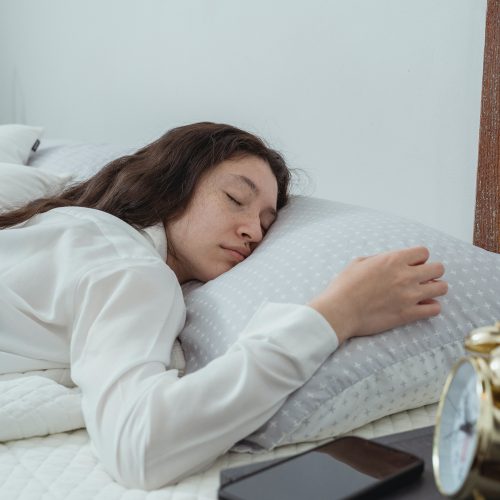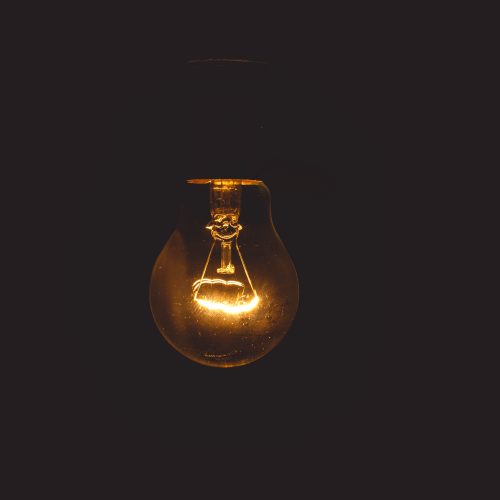
Sleep basics
Everybody knows how to sleep. But the Do’s and Don’ts for good sleep are not clear. We look at the aspects that make sleep refreshing and not exhaustive.
Introduction
Sometimes you feel exhausted or not as fresh as you could be. Sometimes it is stress, but much more often it is sleep that is the main culprit.
We all know the „you shall sleep 8 hours per day“ – Mantra.
Many treat this only as an option or say: „Yeah I feel tired, but I CAN‘T sleep
more than 6 hours with my schedule.“
First let’s question the Mantra. There is more to sleep than
getting a certain amount of hours in.
Second let’s talk about quality. We look at multiple streams of actions to
enhance our sleep so it gives us the refreshing effect we all wish to have.
Duration
Contrary to the believe that you can optimize everything, sleep does not fit well into the equation. We can’t actively sleep to rest. For a better understanding, we need to look at sleep cycles:
REM means Rapid-Eye-Movement, but that is not important in this context. It was shown that you can not have the best sleep possible if you don’t run through a certain amount of sleep cycles. There are REM (= Rapid-Eye-Movement) and Non-REM Phases which succeed each other in a given order. Each cycle is similar, but different in the intensity of each of the 5 steps. For the majority of people each cycle takes 1h 15 min up to 1h 40 minutes.
Usually people have to go through 6 cycles to refresh, hence the recommended 7-8 hours. There is a small percentage (approximately 1% of humanity, that is a chance of 1 in 100) that can sleep less than 7 hours without negative effects.
Many more people claim to be able to sleep only 6 hours or less and feel totally refreshed. How many people told you that they sleep less than 7 hours and say, that they can’t or don’t need to sleep that much? I bet that’s a lot more than 1% of the population. Could there be the possibility, that those people believe what they are saying? Not realizing that they got used to their „new“ state of sleep deprivation and setting their new energy level as their new norm.

Some tests to try:
1. Take a free day and test out how long your body sleeps in total darkness without interruptions. Cut out any possible to-dos in the morning.
If you sleep longer than your routine sleep duration, there is a chance you are sleep deprived, but didn’t know yet.
2. Try to sleep for different durations. Do this for a week each. Note your results every day– restedness, mood and stress level on a scale of 1 to 10.
First try to sleep for 7 hours in week 1.
Then progress in 15 minute intervalls so you sleep for 7 hours and 15 minutes in week 2.
Week 3 is 7 hours and 30 minutes.
Week 4 is 7 hours and 45 minutes.
Week 5 is 8 hours.
Take a look at your results and find your personal best duration.
3. Fine tuning: Find the weeks you scored best. Is there one week at the top? Or are there 2 close to each other?
If there is a clear winner:
a. Try subtracting 5 minutes from the duration for 2 weeks and check if it feels better.
b. Then add 5 minutes to the original duration and check if that feels better.
This should be more than enough to find your perfect time frame.
For people interested in getting to the max, you can pinpoint the amount of minutes your body and mind need to be perfectly rested by using this method. Just iterate and keep 1-2 weeks as testing periods. Otherwise your body can’t adjust and give feedback to different weekly schedule shifts.
If there are 2 on top which are close to each other:
c. Try adding 5 minutes to the duration of the smaller one for 2 weeks and check if it feels better.
d. Then add additional 5 minutes and test for 2 week.
And again for the people intersted in getting to the max, repeat this procedure with less minutes between the two time frames that worked best for you.
If there are 2 winners which are not close together, we are in a tricky situation with 2 possible approaches:
e. You can test for each of those 2 the first optimization method, but this results in chaos. It needs a lot more than 1 week to adjust once you jump from one winner to the other. Been there, done that, not fun.
f. You can pick the duration of the week as a starting point where more stress was involved. Life can get stressy and we need recovery in those weeks the most. So when you feel good in a stressy week with a certain duration of sleep, this hints that it could be near your optimum of sleep duration.
Sleeping position



The physical position in which we lie in bed to sleep and rest determines the quality of our physical rest.
There are commonly 3 types of how people lie in their bed. They either lie on their back, on the side or on the belly. We now look at all of those positions in brief.
Belly
Imagine you have to look an entire day over your left shoulder. The first 10 minutes, it is not a problem. Half an hour and you start realizing that you are not used to this. But then imagine holding the position for an hour. Okay, that’s an episode on Netflix of nearly any series. Now imagine watching 3 episodes of Netflix in the same position lying on your couch. That doesn’t sound too comfy for me. Nor refreshing.
And if we further stretch that timeframe out, we have a full night of sleeping on your belly. Why? Because when you lie on your belly, you can’t have your spine in a neutral position. You can either have it twisted towards the right side or the left. Otherwise you would be suffocating or you have a very special mattress with a hole inside for your face to get fresh air.
Back
Now if we lie on our back, our spine is relaxed and in a neutral position. Our head might get naturally twisted. But the twist happens not through our body weight pushing it into a stretch, but instead through gravity. In general it is regarded the best option to sleep on the back.
But I often got complaints from people not being able to sleep on their back. Some have physical, other psychological reasons. For those people, if they are unable to solve those issues, sleeping on their side is the way.
Sidesleeping
Sidesleeping is the most used sleeping position. The only difference is that sleeping on the right side enables your stomach acids to cause a sore throat in the morning or bad breath.
For any side there is the possibility to increase or decrease the pressure on your spine.
If your lower leg is straight and your upper leg is bend forward, and caused by sleep your muscles relax, gravity is doing it’s work again. Your spine will get sucked into an unhealthy position.
If you sleep in the fetal position it is less severe. Fetal position is the curling up with knees tucked in. Gravity has lesser chance to suck you in.
If fetal position is not an option for you, countermeasures are either bending the straight (lower) leg and straighten the bend (upper) leg
and/or putting a pillow/blanket in your back and lie half on your back, half on your side.
We can get heavily influenced by a bad mattress, but I haven’t found the best mattress yet. So I can’t wholeheartedly recommend something.

Schedule
A schedule helps by being a guideline throughout your day. It helps in giving structure.
A sleep schedule is a given timeframe where you always go to bed and where you rise up again each day.
Some people are very strict:
„My evening routine starts at 21, I do 4 things in a given order and then I lie in bed at exactly 21:42 and pass out at 22:03.
Then I wake up naturally between 5:55-6:01 depending on the exhaustion of yesterday and my sleeping position at night.“
This way is great for some persons, but the majority can’t do that.
Athletes and high performers e.g. need a certain frame around their core work. Often things can get messy in their daily doing and they should stabilize their surroundings as much as possible. Then all the focus can go to cleaning up the mess. Their timeframe is highly inflexible and orientated on their personal needs.
For everybody else there is a different framework I personally recommend:
Have a frame of 30 minutes around a certain time where you are allowed to start your sleep routine. But we talk about the routine in detail later. Here we have a look at the timeframe: when to go to sleep, which causes you to wake up at a certain time the next day following your optimal sleep length.
Do you know that groggy feeling on a Monday morning after a nice weekend with your friends out until late at night? That is social jetlag. Some older people know that feeling much stronger. When they had a party life in their younger days and suddenly they can’t go out late without 4 days of suffering with their energy levels.
Social jetlag occurs, when you break out of your sleep schedule. Your internal clock gets confused by staying up so late. It adjusts and thinks that the new sleeping time is the starting time of a new rhythm. Now on Monday you have to wake up on time again and can’t keep your rhythm of the weekend.
Congratulations!
Your body is now confused even more and needs again time to adjust. For each hour you shifted into one direction, experience has shown that you need 1 day adjustment. In real jetlag situations, this formula has actually been tested in research.
So being consistent with your sleep schedule is a lifestyle choice. Don’t get me wrong: The choice is planning around certain events and adjusting your sleeping time in a smooth manner instead of a YOLO attitude.
Surroundings




Light and Sound
Light and sound exposure can strongly influence the quality of your sleep.
So you should stay in a room that is as dark as possible and as quiet as possible to reap the maximum rewards. There is proof, that even if you can’t recognize light with your eyes but a part of your body gets directly shone upon, sleep quality is worse. Even small light sources can diminish the quality to a significant level.
If light finds it‘s way indirectly to you, it decreases the sleep quality as well. So even light that doesn’t shine onto you or your bed, but onto a wall gets reflected and touches you again.
Some typical sources of light are power strips, chargers or lanterns from the outside.
We wake up best if woken up by the sunlight or with the sun rise. Especially for those who have difficulties waking up in the morning, the sun can be a game changer.
So we run into a dilemma if we haven’t got smart blinders. If we want to banish all the light at night, we have to close the blinders and they won’t come up automatically in the morning.
To solve this, you should try to optimize for one side:
blinders closed and no sound or semi open/ completely open blinder to get the sun light in the morning. The choice depends on your personal ability of waking up in the morning.
For country folks complete darkness and sun in the morning should be easier as there are less outside light sources which require closed blenders.
The second advice I like to give is getting a clock that simulates the sun rise, so you can close the blinders and wake up with „sun“ light.

Temperature
The next thing you need to be aware of is that to fall asleep, it is optimal for your body to lower it’s temperature by 1 degree.
Hence it is recommended to have 18 degrees in the room.
Some people freeze at those temperatures, so you need to find a way to lower your body temperature in a different way. One is having a fan in the room, another is taking a shower. Even warm showering causes your body to sweat, resulting in a cooling down of your body once you get out of the shower.
New Surroundings
When you feel like you need some time to adapt to a new surrounding, your feeling is right. In new surroundings, one side of the brain stays more alert, hence not recovering fully.
With each night in the new surroundings, the brain gets accustomed and the process of recovery improves.

Evening Routine
There are approximately 2 million evening/ bed time routines out in the internet. So I do all of us a favor by not providing the next guru magic routine. I just will show some basic ideas and you can do the building yourself.
For every hour in which you looked at a screen before going to sleep, you lose the effect of half an hour of sleep time. So if you were 3 hours on your computer right before going to bed and you woke up after 8 hours of sleep, you actually got the effectiveness of 6.5 hours, which is below the threshold we learned earlier about.
What can you do?
You can use the last half hour before going to sleep: off screen, reading, relaxing, taking a shower, drinking some water, having a walk or anything else that involves no screens
For those who want to reap the maximum results, you can go for one hour off screen. But in our modern addicted world, due to mobile phones, information and blue lights, I often hear complaints about that one hour. But that is a lifestyle choice once again.
What I recommend for any routine in the morning or in the evening is finding 4-7 items that make your morning/evening great and if you can do 2 of those, your job is done. You will automatically become content. Clearly you can ace it and complete all of them, but 2 is the minimum. The items need to be essentials for well-being. Make a list and every morning/evening do 2 of those. The lists can be the same, but they can also be different. When done, give it a check on the list. This is conditioning on positive behaviour. There are different apps that can support you doing this.
The advantage of a certain amount of items you need to do at the minimum, is not having the feeling of a shopping list. In a shopping list you have to tick every box or item. Here you have the option to tick if you feel like it and you just need some ticks every day. This enhances the feeling of doing something great. We want to peacefully calm down before sleeping.
Did this article help you? Did you learn something new? Do you know somebody who might need to read this article? Sharing is caring.
